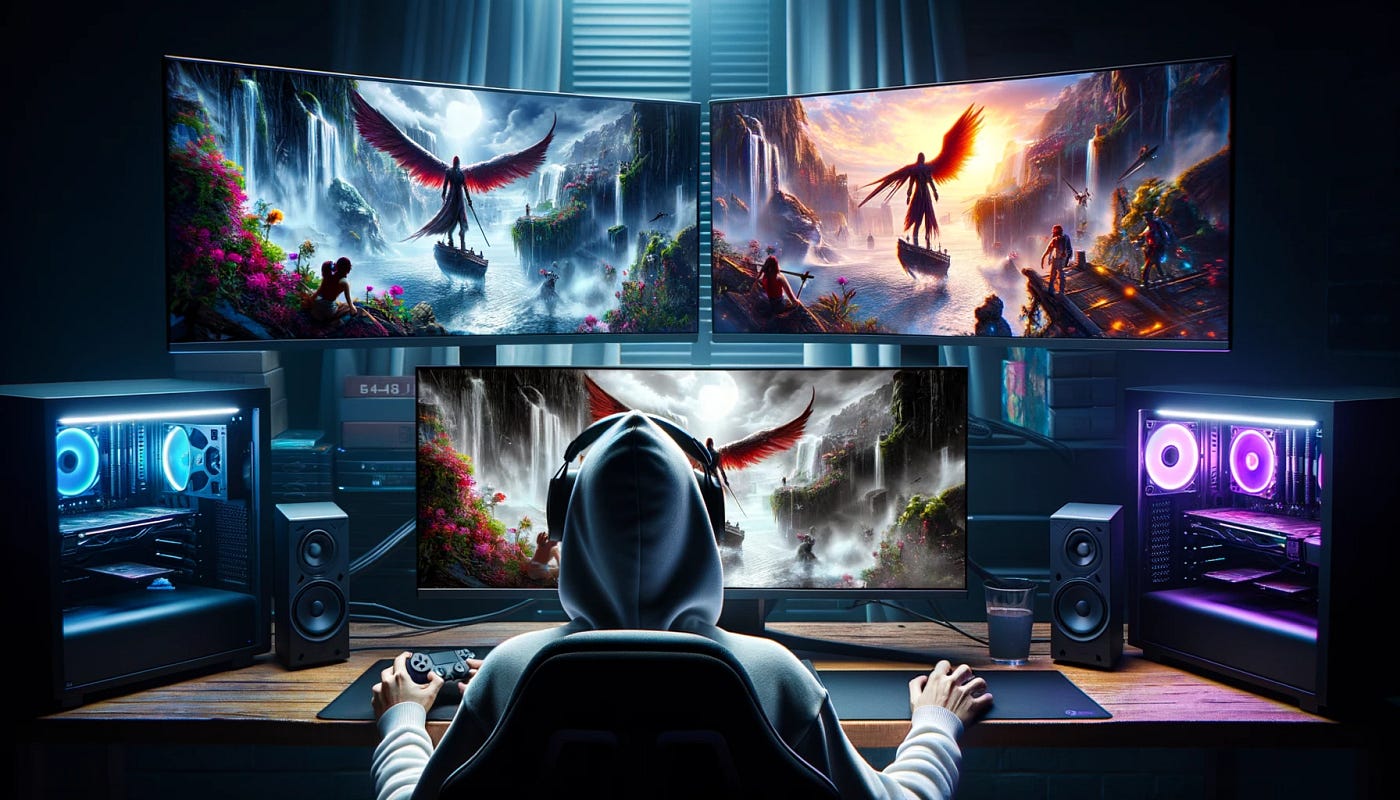May 13, 2024
Introduction
The marriage of artificial intelligence (AI) and gaming has ushered in a new era of immersive and captivating gameplay experiences. From breathtaking graphics to dynamic narratives and finely tuned gameplay mechanics, AI has become a cornerstone in shaping the modern gaming landscape. In this article, we'll explore how AI enhances gaming experiences across three key dimensions: graphics and animation, narrative and dialogue, and gameplay and difficulty. Additionally, we'll examine the challenges and limitations that developers face in integrating AI into gaming, while also celebrating the boundless potential AI brings to the world of gaming. Let's delve into the transformative power of AI in enhancing gaming experiences.
Graphics and Animation:
One of the most striking ways AI enhances gaming lies in the realm of graphics and animation. AI facilitates the creation of lifelike and dynamic game environments, characters, and effects through techniques like procedural generation, neural style transfer, and deepfakes. Procedural generation, for instance, allows for the algorithmic creation of content, ensuring endless variety and scalability. Meanwhile, neural style transfer enables the application of different artistic styles to visuals, resulting in unique and expressive gaming experiences. Deepfakes further enhance realism by convincingly manipulating faces and voices.
Narrative and Dialogue:
AI also plays a significant role in shaping gaming narratives and dialogues. By leveraging natural language processing, natural language generation, and sentiment analysis, AI helps craft engaging stories, characters, and conversations. Natural language processing enables AI to comprehend and manipulate human language, fostering rich interactions. Additionally, natural language generation empowers AI to generate text or speech dynamically, enriching dialogue. Sentiment analysis detects user emotions and opinions, facilitating adaptive and personalized narratives.
Gameplay and Difficulty:
In gaming, AI optimizes gameplay and difficulty by designing and balancing mechanics, rules, and challenges. Techniques such as reinforcement learning, evolutionary algorithms, and player modeling are instrumental in this aspect. Reinforcement learning allows AI to learn from trial and error, refining its performance over time. Evolutionary algorithms evolve solutions akin to natural selection, introducing novelty and diversity. Player modeling creates user profiles based on preferences and behaviors, enabling tailored gaming experiences.
Challenges and Limitations:
Despite its benefits, integrating AI into gaming presents challenges and limitations. Ethical, social, and legal issues like potential misuse, impact on human creativity, and regulatory concerns must be addressed. Technical complexities, practical considerations, and aesthetic preferences also pose challenges. Creating robust AI, managing development costs, and balancing realism with artistic vision are among the hurdles developers face.
Conclusion:
Artificial intelligence is a powerful ally in the gaming industry, enriching experiences through advanced graphics, compelling narratives, and finely tuned gameplay. While AI brings immense potential, it demands careful navigation of ethical, technical, and practical considerations. By harnessing AI responsibly and creatively, developers can unlock new realms of immersion and enjoyment for gamers worldwide.





